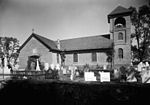My Lady's Manor
1713 establishments in MarylandHistoric districts in Baltimore County, MarylandHistoric districts in Harford County, MarylandHistoric districts on the National Register of Historic Places in MarylandNRHP infobox with nocat ... and 3 more
National Register of Historic Places in Baltimore County, MarylandNational Register of Historic Places in Harford County, MarylandUse mdy dates from August 2023

My Lady's Manor is a national historic district at Monkton, Baltimore County and Jarrettsville, Harford County, Maryland, United States. It is a rural or agricultural area, with one village, Monkton. Monkton first developed around a water-powered grist mill and later became a station on the Northern Central Railway. The 10,000-acre (40 km2) manor itself was established in 1713. Over 60 principal structures, plus numerous important outbuildings associated with them, are included in the district.It was added to the National Register of Historic Places in 1978.
Excerpt from the Wikipedia article My Lady's Manor (License: CC BY-SA 3.0, Authors, Images).My Lady's Manor
Shepperd Road,
Geographical coordinates (GPS) Address Nearby Places Show on map
Geographical coordinates (GPS)
| Latitude | Longitude |
|---|---|
| N 39.5875 ° | E -76.571111111111 ° |
Address
Shepperd Road 3001
21111
Maryland, United States
Open on Google Maps


